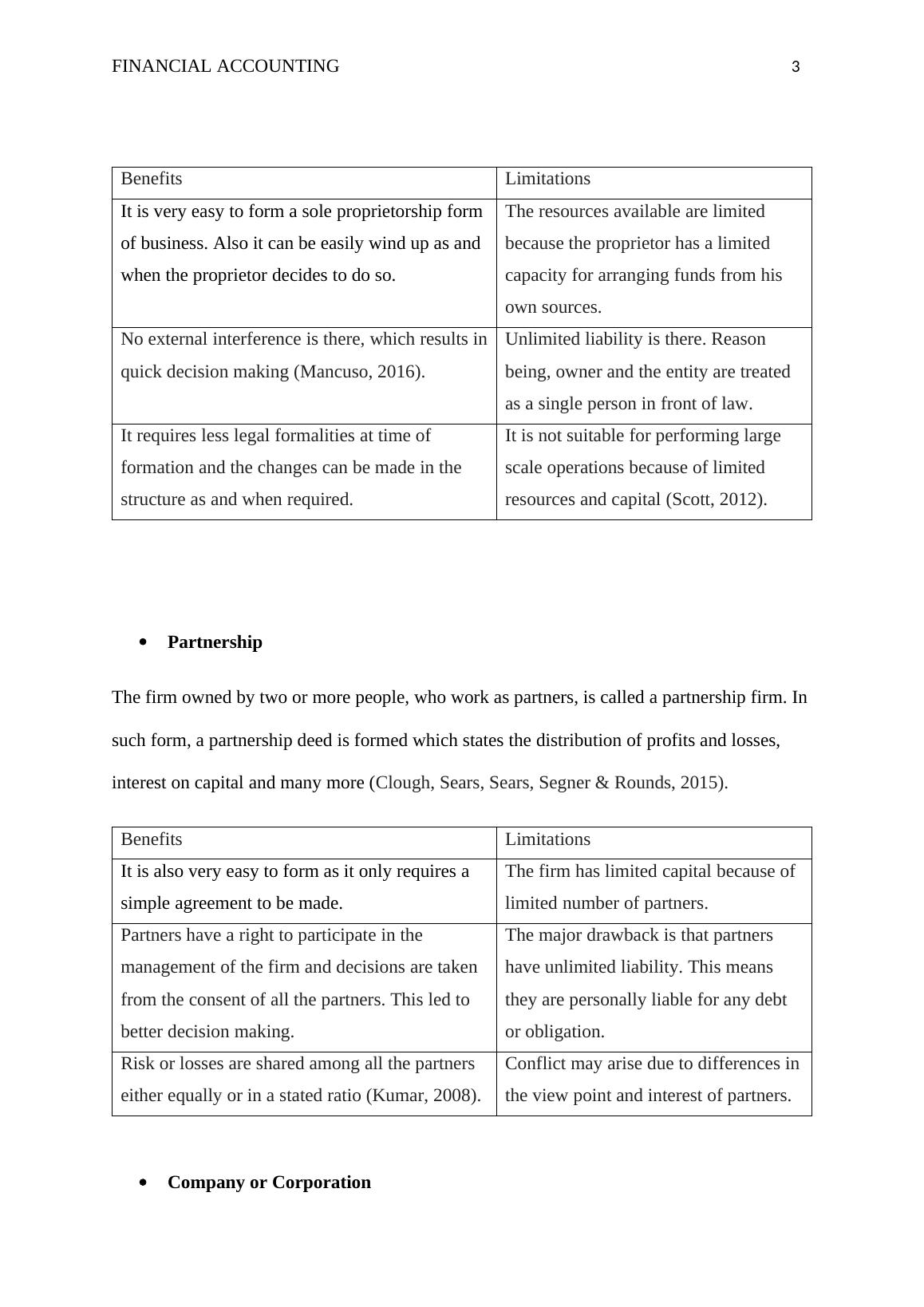RUNNING HEAD: FINANCIAL ACCOUNTING
Added on 2021-04-24
12 Pages2746 Words379 Views
RUNNING HEAD: FINANCIAL ACCOUNTING BUSINESS ACCOUNTING

FINANCIAL ACCOUNTING 1ContentsIntroduction................................................................................................................................2Task 1.........................................................................................................................................2Task 2.........................................................................................................................................4Task 3.........................................................................................................................................7Recommendation........................................................................................................................9Conclusion..................................................................................................................................9References................................................................................................................................10

FINANCIAL ACCOUNTING 2IntroductionThis report contains detailed information about the type of business entities available along with the merits and demerits of each type. It also explains the various sources of funds available to a business owner. The main focus is on the long term and medium term sources of finance and explained with the examples. The last part of the report explains and differentiates the terms financial and management accounting, followed by a recommendation provided to the client by a financial consultant working in a consultancy firm, named IBM. The advice was about choosing the best type of entity and best source of finance. Task 1An organization which produces goods and services with the help of available resources, in order to meet the requirements of a consumer, is known as business organization. The business organization can be funded by a single individual or a group of individuals who owns and manage the business in the form of partnership or a company. Such arrangement of ownership is called as forms of business organization. Following are the different forms of business units:Sole proprietorshipAs the name suggest, it is the form in which business is managed and owned by one individual. In the books of accounts, owner and business are considered as a separate entity but for legal purposes both are taken as single entity. The profit or loss made in the business solely belongs to the trader and he has the full control over the activities of the organization. (Pride, Hughes & Kapoor, 2014).

FINANCIAL ACCOUNTING 3Benefits Limitations It is very easy to form a sole proprietorship form of business. Also it can be easily wind up as and when the proprietor decides to do so. The resources available are limited because the proprietor has a limited capacity for arranging funds from his own sources. No external interference is there, which results inquick decision making (Mancuso, 2016).Unlimited liability is there. Reason being, owner and the entity are treated as a single person in front of law. It requires less legal formalities at time of formation and the changes can be made in the structure as and when required. It is not suitable for performing large scale operations because of limited resources and capital (Scott, 2012).PartnershipThe firm owned by two or more people, who work as partners, is called a partnership firm. Insuch form, a partnership deed is formed which states the distribution of profits and losses, interest on capital and many more (Clough, Sears, Sears, Segner & Rounds, 2015).Benefits Limitations It is also very easy to form as it only requires a simple agreement to be made. The firm has limited capital because of limited number of partners. Partners have a right to participate in the management of the firm and decisions are taken from the consent of all the partners. This led to better decision making. The major drawback is that partners have unlimited liability. This means they are personally liable for any debt or obligation. Risk or losses are shared among all the partners either equally or in a stated ratio (Kumar, 2008).Conflict may arise due to differences inthe view point and interest of partners. Company or Corporation

End of preview
Want to access all the pages? Upload your documents or become a member.
Related Documents
Types of Business Organizations and Legal Structureslg...
|17
|869
|29
Types of Business Enterprises and Long Term Sources of Finance for Listed Companieslg...
|6
|1397
|267
Different Business Enterprises and Long Term Sources of Financelg...
|6
|1325
|450
Modes of Presenting Accounting Informationlg...
|3
|664
|22
Advantages and Disadvantages of Profit Business Structures and the Use of Accounting Informationlg...
|10
|1653
|169
Different Types of Business Enterprises and Long Term Sources of Financelg...
|5
|1506
|483
